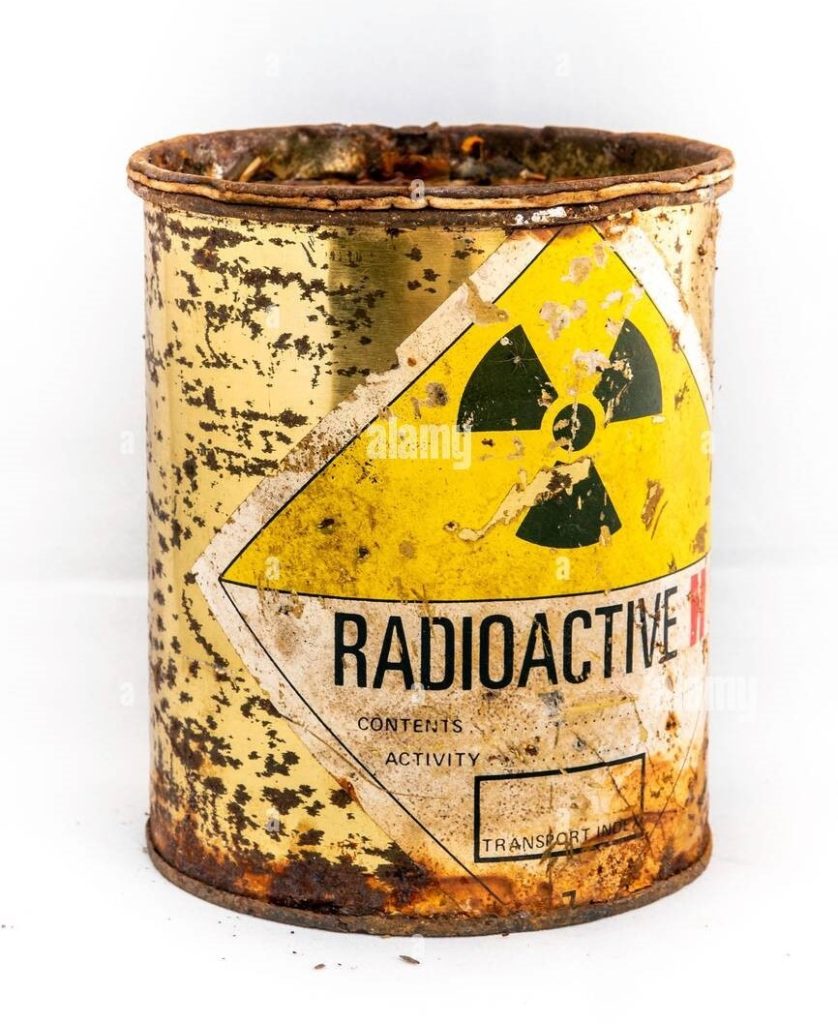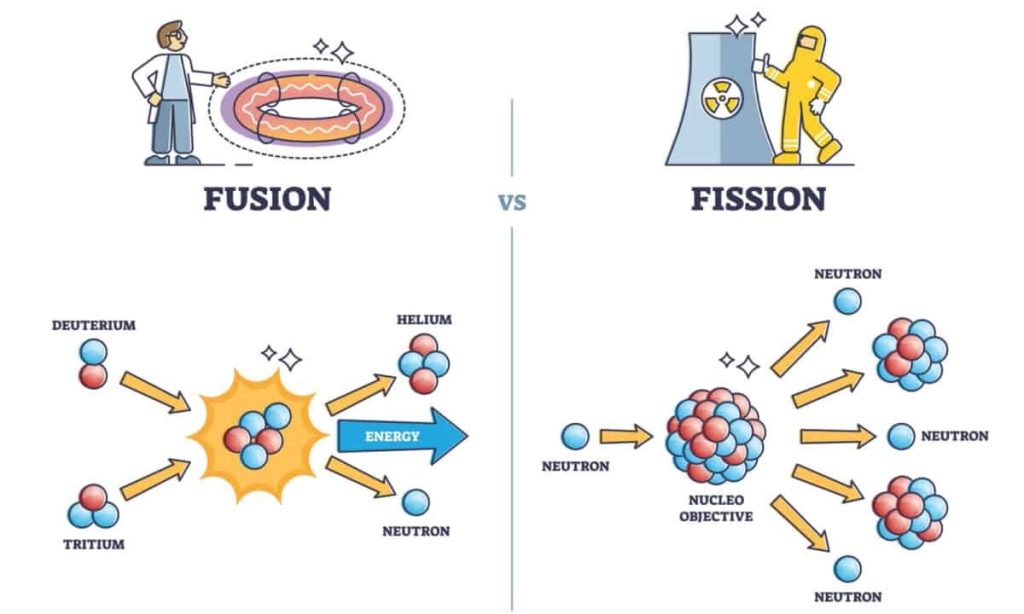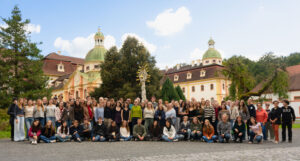In today’s world the most talked about theme is energy. In the past several months we have experienced that energy started to ”disappear”. We all know there are two types of energy: renewable (energy of the wind or energy of the water, solar energy, etc.) and non-renewable (fossil fuels). As we see, the world is running out of fossil fuels and in many countries that has a direct impact on their economic development and environment. Those crises need to be solved quickly, which is why we chose nuclear energy. So, let us introduce you to nuclear energy.

Fig.1: The symbol of radioactive radiation on the containers with radioactive waste.
You are probably wondering what nuclear energy is.
In the following text we will do our best to tell you what nuclear energy is in the simplest possible way.
Basically, it is a form of energy released from the nucleus, the core of atoms, accompanied by high energy particles like alpha particles, or positrons or electrons… There are two types of thermonuclear reactions and those are FISSION and FUSION.
Nowadays, we use fission but it has a negative effect on the environment. Fission is a reaction in which the nucleus of an atom splits into two or more smaller nuclei. Uranium and plutonium are most commonly used for fission reactions in nuclear power plants because they are easy to initiate and control. The energy released by fission in nuclear power plants, the reactors, heats water into steam. The steam is used to spin a turbine to produce carbon-free electricity. We want to call it ”green energy”.
So, the question is: Why, then, is fission bad for todays’ world?
Well, nuclear fission isn’t bad but what is bad are the fission remains – the nuclear waste.
Radioactive waste is a type of hazardous waste that contains radioactive material. Radioactive waste is a result of many activities, including nuclear medicine, nuclear research, nuclear power generation, rare-earth mining, and nuclear weapons reprocessing. The storage and disposal of radioactive waste is regulated by government agencies in order to protect human health and the environment.
We mentioned uranium and plutonium, well, in nuclear reactors Uranium-235 (235U or U-235) is used. The uranium – 235 is an isotope of uranium, making up about 0.72% of natural uranium. Unlike the predominant isotope uranium-238, it is fissile. It is the only fissile isotope that exists in nature as a primordial nuclide. Uranium-235 has a half-life of 703.8 million years. Half-life is a measure of the time it takes for one half of the atoms of a particular radionuclide to disintegrate into another nucleus form. Each radionuclide has a characteristic half-life. Half-lives vary from millionths of a second to billions of years. Because radioactivity is a measure of the rate at which a radionuclide decays, the longer the half-life of a radionuclide, the less radioactive it is for a given mass. The half-life of uranium-238 is about 4.5 billion years, uranium-235 about 700 million years, and uranium-234 about 250 thousand years. Uranium and its decay products primarily emit alpha radiation, however, lower levels of both beta and gamma radiation are also emitted. The total activity level of uranium depends on the isotopic composition and processing history.
Throughout history, the incidents have happened when radioactive material was disposed of improperly, shielding during transport was defective, or when it was simply abandoned or even stolen from a waste storage. But even when radioactive waste is properly stored, natural processes could open the containers and contaminate water resources, etc.
We have 250 nuclear power plants around the world. If this number increases, there is no doubt that the environment will be in danger. We have energy crises, so we really need more power plants.
Why fusion?
Every day we see fusion results with our own eyes, but most of us are not aware of that. You are probably wondering where we see it, well, the answer is – in the sky. The light is the result of fusion. The fusion takes place in the core of the Sun. If it is seen through our whole life, then it is necessary to know what it is. Nuclear fusion is a reaction in which two or more light atomic nuclei are combined to form one heavier atomic nuclei and subatomic particles accompanied by released energy several times greater than energy released through fission. As we know, today we can create some chemical elements through the process of fusion that is produced in stars (proton – proton cycles). Why doesn’t our civilization use fusion to create chemical elements that are useful and that are accompanied by real green energy? The fusion process doesn’t produce waste.

Fig.2 The illustration of fusion and fission thermonuclear reaction. The illustration is taken from https://history-computer.com/what-is-nuclear-fusion-is-it-possible-and-does-it-matter/
Why can’t we use fusion right now?
Fusion has some conditions that need to be fulfilled in order to work. For example, fusion needs high pressure, gravitational force and high temperature. At the much lower pressures that are possible on Earth, temperatures to produce fusion need to be much higher (above 100 million Celsius). No materials exist that can withstand direct contact with such heat.
Currently CERN is the only institution that is doing research on fusion in collaboration with other institutions from other countries. The project is called ITER. The primary objective of ITER is the investigation and demonstration of burning plasmas – plasmas in which the energy of the helium nuclei produced by the fusion reactions is enough to maintain the temperature of the plasma, thereby reducing or eliminating the need for external heating.
The fusion could solve our energy crises and maybe open new opportunities for space exploration.
Stefan Lonco & Andrej Mirnić
References:


